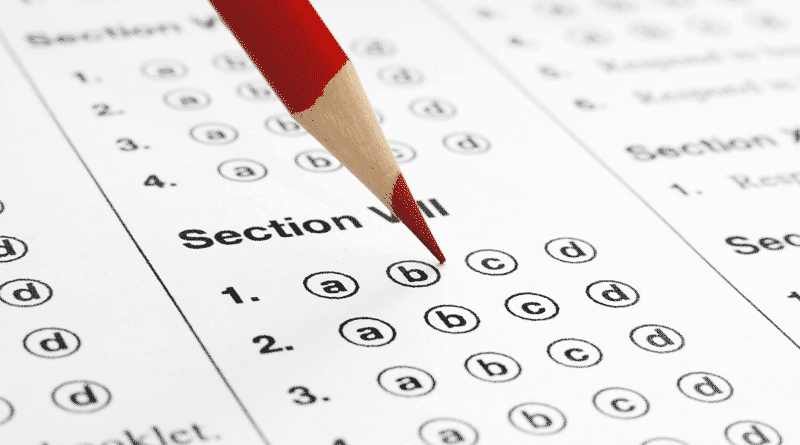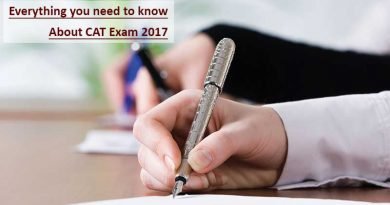About Common Proficiency Test:
CPT stands for Common Proficiency Test and it is the entrance exam to become a Chartered Accountant after 12th Commerce.CPT is the first Beginner and fresher level to enter in Chartered Accountancy examinations in India. Commerce Student can register/Enroll for CPT after completing 10th class and take the exam after completing 12th class/High School (Grade 12). The exam is held twice in a year in the months of June and December.You should also read How to become a Chartered Accountant after 12th Commerce
CPT exam is an objective and MCQ type examination that contains 200 multiple choice questions from all four sections about Quantitative Aptitude, Accounting, Economics and Mercantile Law. To qualify the exam an exam candidate has to get marks 30% in each section and 50% aggregate marks.
Graduated and Post Graduated(candidate who have equivalent degrees in effect from August 3, 2012) are exempted for this exam.Commerce graduates(having 55% in their graduations) sit directly in IPCC examinations.
CA CPT Exam Pattern:
CPT consists:
- CPT is first entry Level Examination for CA(Chartered Accountant) course
- CPT Consists 4 Papers
- CPT is objective type examination and having 200 Multiple Choice questions
- CPT Examination is conducted twice in a year, in June and December only CPT – Subjects for Study& Examination Pattern
Detail of CPT:
Common Proficiency Test is divided into two sessions contains 100 questions in each session.
Session – I (10.30 AM to 12.30 PM)
Sections Subjects Marks
Section A Fundamentals of Accounting 60
Section B Mercantile Laws 40
Session – II (2 PM to 4 PM)
Section C General Economics 50
Section D Quantitative Aptitude 50
Total 200
Expected Level of Knowledge: Basic Knowledge
CPT – Passing Criteria:
- Student has to obtain minimum 100 marks i.e. 50% of total Marks(200) for passing CPT
- No Subject wise linkage for passing CPT
- Negative marking of 0.25 Marks for every incorrect answer
- Blank answer will fetch Zero marks Marks Evaluation System
Attempting Questions Marks For the Question Marks awarded
Questions attempted
& found correct 110 110
Questions attempted
& found incorrect 40 -10
Questions have not attempted 50 00
Total 200 100
Result: 50.00 %. PASS
CPT Registration Procedure:
1. Last Date: 60 days before the first day of the month in which exam takes place
2. 31st March for June attempt
3. 30th September for December attempt
CA CPT Eligibility:
Candidates after passed class X examinations recognized by the Government (like CBSE) can register for CPT Exam.
Candidates who have passed class 10+2 examinations(after 12th class) recognized by the Government (like CBSE) can appear for CPT Entrance Exam.
Also, candidates who have registered for CPT 60 days(2 Months) prior to the first day of the month in which the CPT exam is to be conducted i.e on or before 1st of April and 1st of October can appear in CPT exam to be held in June and December.
Belom Mentioned in the list of examinations that have an equal value to Senior Secondary Examinations.
• Central Board of Secondary Education (CBSE)
• Board of Intermediate Education, Andhra Pradesh
• Government of Karnataka Department of Pre-University Education
• Maharashtra State Board of Secondary & Higher Secondary Education
• Maharashtra State Board of Secondary & Higher Secondary Education
• Chhattisgarh Board of Secondary Education
• Goa Board of Secondary and Higher Secondary Education
• Board of School Education, Haryana
• J&K State Board of School Education
• Government of Karnataka Department of Pre-University Education
• Council of Higher Secondary Education, Manipur
• Bihar School Examination Board
• Mizoram Board of School Education
• H. P. Board of School Education
• Assam Higher Secondary Education Council
• Council of Higher Secondary Education, Orissa
• Board of School Education, Uttarakhand
• Board of Secondary Education, Rajasthan
• Chhattisgarh State Open School
• Council for Indian School Certificate Examinations (CISCE)
• Tripura Board of Secondary Education
• Gujarat Secondary & Higher Secondary Education
• Tamil Nadu State Board of School Examinations
• U. P. Board of High School and Intermediate Education
• The West Bengal Council of Rabindra Open Schooling
• Nagaland Board of School Education
• National Institute of Open Schooling
• Kerala Board of Higher Secondary Education
• Punjab School Education Board
• Meghalaya Board of School Education
• M.P. State Open School
• Jharkhand Academic Council
• Banasthali Vidyapith
• West Bengal Council of Higher Secondary Education
• Rajasthan State Open School
• Board of Secondary Education, Madhya Pradesh
CPT Exam Syllabus:
SESSION I:
Section A: Fundamentals of Accounting (60 Marks)
Contents and Topics:
1. Theoretical Framework
(a) Meaning and Scope of accounting.
(b) Accounting Concepts, Principles and Conventions.
(c) Accounting Standards –concepts, objectives, benefits.
(d) Accounting Policies.
(e) Accounting as a measurement discipline –valuation principles, accounting estimates.
2. Accounting Process: Books of Accounts leading to the preparation of Trial Balance, Contingent assets and contingent liabilities, Capital and revenue expenditures, Capital and revenue receipts, Fundamental errors including rectifications thereof.
3. Bank Reconciliation Statement
4. Inventories: Basis of inventory valuation and record keeping.
5. Depreciation accounting: Methods, computation and accounting treatment and change of depreciation.
6. Preparation of Final Accounts for Sole Proprietors
7. Accounting for Special Transactions
(a) Consignments
(b) Joint Ventures
(c) Bills of exchange and promissory notes
(d) Sale of goods on approval or return basis.
8. Partnership Accounts: Retirement and death of a partner including treatment of goodwill, Final accounts of partnership firms –Basic concepts of admission.
9. Introduction to Company Accounts: Issue of shares and debentures, forfeiture of shares, re-issue of forfeited shares, the redemption of preference shares
Section B: Mercantile Laws (40 Marks)
Objective:To test the general comprehension of elements of mercantile law
Contents:
1. The Indian Contract Act, 1872:An overview of Sections 1 to 75 covering the general nature of the contract , consideration, other essential elements of a valid contract, performance of the contract and breach of contract.
2. The Sale of Goods Act, 1930: Formation of the contract of sale –Conditions and Warranties –
Transfer of ownership and delivery of goods –Unpaid seller and his rights.
3. The Indian Partnership Act, 1932:General Nature of Partnership–Rights and duties of partners –Registration and dissolution of a firm.
SESSION II:
Section C: General Economics (50 Marks)
Objective:To ensure a basic understanding of economic systems, economic Behavior of individuals and Organizations.
Contents:
(I) Micro Economics:
1. Introduction to Micro Economics
(a) Definition, scope and nature of Economics
(b) Methods of economic study
(c) Central problems of an economy and Production possibilities curve.
2. Theory of Demand and Supply
(a) Meaning and determinants of demand, Law of demand and Elasticity of demand ─Price, income and cross elasticity
(b) Theory of consumer’s behaviour– Marshallian approach and Indifference curve approach
(c) Meaning and determinants of supply, Law of supply and Elasticity of supply.
3. Theory of Production and Cost
(a) Meaning and Factors of production
(b) Laws of Production – The Law of variable proportions and Laws of returns to scale
(c) Concepts of Costs ─ Short-run and long-run costs, Average and marginal costs, Total, fixed and variable costs.
4. Price Determination in Different Markets
(a) Various forms of markets – Perfect Competition, Monopoly, Monopolistic Competition and Oligopoly
(b) Price determination in these markets.
(II) Indian Economic Development
5. Indian Economy –A Profile
(a) Nature of the Indian Economy
(b) Role of different sectors –Agriculture, Industry and Services in the development of the Indian economy, their problems and growth
(c) National Income of India –Concepts of national income, Different methods of measuring national income, Growth of national income and per capita income in various plans.
(d) Basic understanding of the tax system of India –Direct and Indirect Taxation
6. Select Aspects of Indian Economy
(a) Population –Its size, rate of growth and its implication for growth
(b) Poverty –Absolute and relative poverty and main programs for poverty alleviation
(c) Unemployment –Types, causes and incidence of unemployment
(d) Infrastructure ─ Energy, Transportation, Communication, Health and Education
(e) Inflation
(f) Budget and Fiscal deficits
(g) Balance of payments
(h) External debts.
7. Economic Reforms in India
(a) Features of economic reforms since 1991
(b) Liberalization, Privatization and Disinvestment
(c) Globalization
8. Money and Banking
(a) Money –Meaning and functions
(b) Commercial Banks–Role and functions
(c) Reserve Bank of India –Role and functions, Monetary Policy
Section D: Quantitative Aptitude(50 Marks)
Objective:To test the grasp of elementary concepts in Mathematics and Statistics and application of the same as useful quantitative tools.
Contents:
1. Ratio and proportion, Indices, Logarithms
2. Equations: Linear–simultaneous linear equations up to three variables, quadratic and cubic equations in one variable, equations of a straight line, intersection of straight lines, graphical solution to linear equations.
3. Inequalities: Graphs of inequalities in two variables ─ common region.
4. Simple and Compound Interest including annuity─ Applications
5. Basic concepts of Permutations and Combinations
6. Sequence and Series –Arithmetic and geometric progressions
7. Sets, Functions and Relations
8. Limits and Continuity ─ Intuitive Approach
9. Basic concepts of Differential and Integral Calculus (excluding trigonometric functions)
10. The statistical description of data
(a) Textual, Tabular & Diagrammatic representation of data.
(b) Frequency Distribution.
(c) Graphical representation of frequency distribution –Histogram, Frequency Polygon, Ogive
11. Measures of Central Tendency and Dispersion Arithmetic Mean, Standard Deviation
12. Correlation and Regression
13. Probability and Expected Value by Mathematical Expectation
14. Theoretical Distributions Binomial, Poisson and Normal
15. Sampling Theory: Basic Principles of sampling theory, Comparison between sample survey and complete enumeration, Errors in sample survey, Some important terms associated with sampling, Types of sampling, Theory of estimation, Determination of sample size.
16. Index Number
How to prepare and getting ready for CA CPT?:
Studying for CA CPT is hard work but it is not impossible either, with the right attitude and dedicated hard work and smart mind and intelligence can crack this exam. You need the right guidance way and ability to work hard and keep your consistency.
Below mentioned are few guidelines, you should read to follow for your chances at cracking CPT.
1. The Right mindset: Not just for cracking CPT or any other competitive exam, a right mindset is required to excel at almost anything. Most students think CPT as a tough competitive exam but in reality, if prepared the right way it’s easy to crack. All you have to do is believe in your abilities and keep yourself motivated at all times.
2. Planning well: Nothing big has ever been achieved without a good plan. To crack CA CPT you have to have an elaborate plan encompassing your time schedules, syllabus completion and revisions. Creating a good and solid plan and consistently following it will keep things moving smooth and your course won’t pile up. You will save a lot of time as there would be no room for procrastination. First of all, jot down a complete list of the syllabus that you have to prepare, rate different topics on the basis of your interest and prior knowledge and start finishing the higher rated topics first.
This will give you immense confidence as you will see that a lot has been done already. The closer you get to your goal the more your motivation and the drive to succeed will increase. So plan solid and act on it, on a daily basis!
3. Preparing thoroughly: A thorough preparation is required to crack CPT. The paper covers four subjects’ viz. Fundamentals of Accounting, Mercantile Laws, General Economics and Quantitative Aptitude. As the course is wide, strong preparation is required. To do that the first step would be to gather complete study material, CA CPT notes, books etc. Try to get your hands on some sample papers so that you get an overall idea of what comes in paper and how to best answer it for maximum success.
4. Gather your resources: Often, students are baffled regarding what to study and from where for a lot of competitive exam including CA CPT the course is very wide including topics from various subjects. Different students prefer different ways of preparation, while some take the aid of coaching institutes other prepare on their own. Coaching institutes often provide a lot of help as they provide readymade study material in the form of notes, lectures, assignments, CA CPT test series, study material.
The same benefits of regular coaching can also be reaped by joining an online course, joining an online course provides you all the benefits of regular coaching with the added advantages of time-saving, 24*7 access to teachers and counsellors, digital notes, video lectures, 2D and 3D presentations for better understanding, test series etc.
Students can also prepare on their own without any coaching aid but this is not advised as looking for different resources take up a lot of time and also leaves a lot of room for miss-information and errors. Also, students won’t be able to get solutions to their problems quickly.
5. Revision: Perhaps the second most important thing after preparation in the list, revision is must to ensure that you transform your knowledge into marks in the exam. Revision is required after you have completed each topic to transfer all that you have learned to your permanent memory. Take out one day from your week, weekends serve better, for revision of all that you have learned so far. Attempt new problems by using the new knowledge that you have gained in the week to learn effective implementation because this is the only thing that will translate your knowledge into a successful clearing of the exam. Learn to implement your knowledge, find ways to make it better!
6. Preparing for the exam: Overlooked by most students, this crucial step is integral for the successful execution of the exam, candidates prepare throughout the year but they don’t practice test papers enough and on the day of exam, they get anxious and fail to deliver their best. This can be tackled by attempting a lot of test papers, mock tests in a quasi-exam environment.
To overcome this fear and anxiety you can also join an online test series wherein you will get enough exposure on how to effectively tackle the exam and will be graded on a national level, this way you can also track your position amongst the competition and alter your strategies accordingly.
nbsp;
How Can Student apply for CPT?
A student is required to apply in the prescribed form.
You can buy Prospectus from all Regional Offices/ Branches of the Institute by paying Rs. 100/-. The application form is available with the prospectus.
Or,
A student can also download the application form from the Institute’s website www.icai.org, in case, the form is downloaded from the website, pay with online transaction Rs. 100/- or US $10/- with the registration fee.
Students can also fill CPC registration on-line. It is available on Institute’s website www.icai.org
The prospected can also be procured from post/courier from any of the offices of the Institute on payment of Rs. 140/- (Rs. 40/- Postal Charges)





Plz let me know aftr compltng 12 th class from com…b.com etc is necccesaru for cpt exam
It is not necessary but doing Bcom is very useful for you
What should i take after intermediate CA or b.com computers plz give a suggestion
If you are very much passionate about to become a CA, then you should go with both Bcom and CPT.